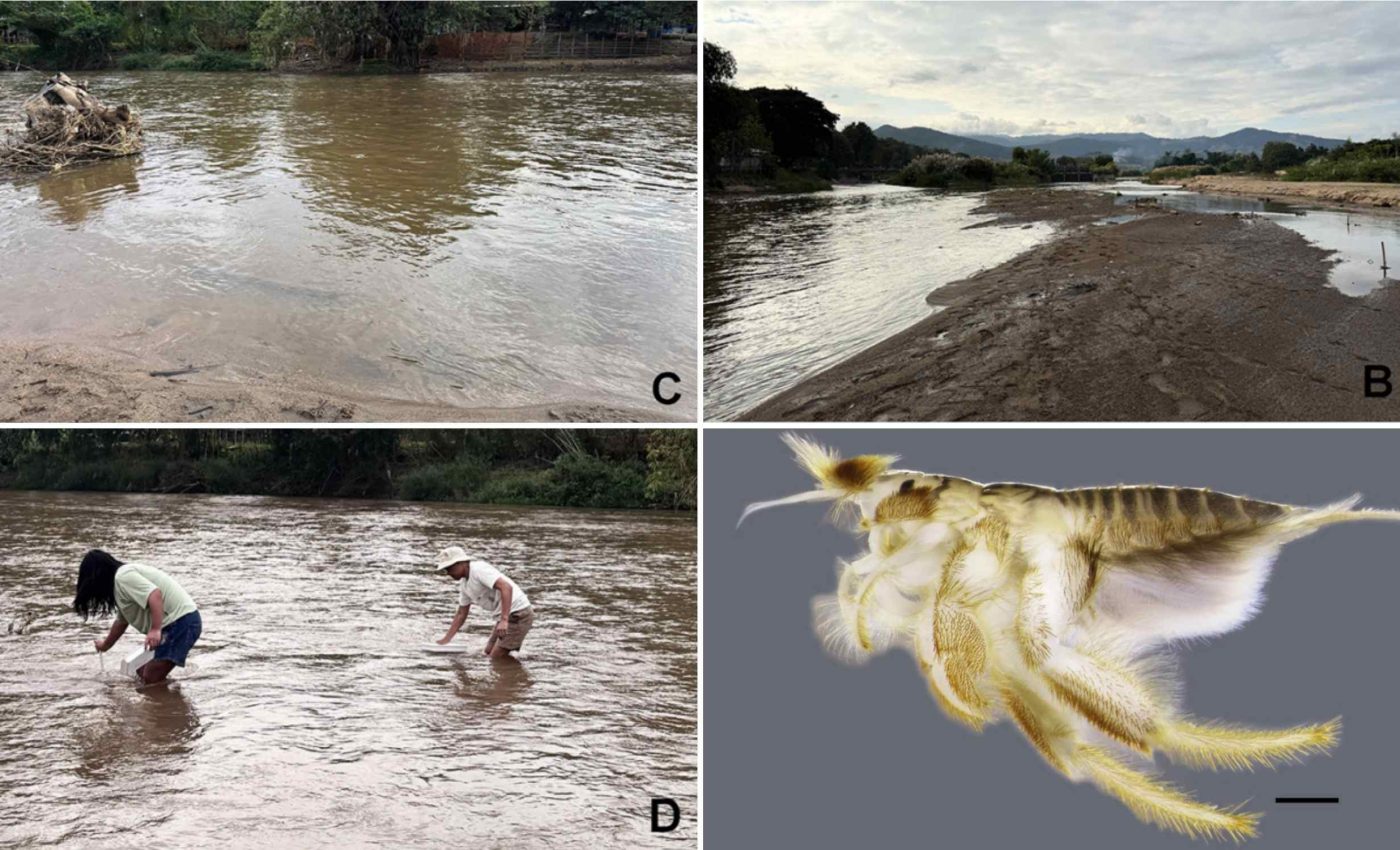
Rare insect that was thought to be extinct for 20 years was rediscovered
Two small, sand‑colored nymphs of the seldom‑seen mayfly Behningia baei surfaced from the Mae Chaem River in northern Thailand during a December 2024 field survey.
The find ends a 22‑year drought of sightings and puts the insect back on scientists’ maps after generations of silence in entomological records.
Until now the species, first described in 2006 from a site about 250 miles to the south, had vanished from every subsequent expedition.
The rediscovery team was led by Sedtawut Kwanboon and Boonsatien Boonsoong of Kasetsart University, Bangkok.
Why Behningia was in the sand
Most mayfly work chases fluttering adults, yet the Thai team instead scuffed the riverbed with kick nets, stirring up juveniles hidden like grains of rice in the fine sediment.
Burrowing youngsters cling to loose sand where sunlight and predators rarely reach, making them easier to sample than their airborne parents.
After hours of microscope work, every mandible, leg, and gill on the two specimens matched the 2006 description of B. baei. High‑resolution images confirmed the identity beyond doubt.
“These new data about the geographic and habitat distributions of behningiid mayflies helps to fill knowledge gaps and improves our ability to address conservation issues surrounding these rarely seen mayflies, not only in Thailand but also globally,” wrote Boonsatien Boonsoong.
The quote hints at how a single rediscovery can redraw conservation priorities far beyond one stream.
The Mae Chaem site sits about 1,350 feet above sea level and 250 miles north of the original locality in Phitsanulok Province. That span suggests the insect occupies more rivers than anyone ever suspected.
Sand‑dwelling mayflies
Mayflies move the energy stored in algae to fish, birds, and other animals. They achieve this by grazing as juveniles and then by becoming prey along nearly every link of the freshwater food web.
Because nymphs breathe through exposed gills, they suffocate in low‑oxygen or polluted streams, so biologists use their numbers as a living water‑quality score.
Locating B. baei confirms that the Mae Chaem reach still carries clean, oxygen‑rich water over stable sand.
While every mayfly supports predators, sand‑burrowing families such as Behningiidae also churn and aerate the top inch of sediment. Their digging loosens grains and speeds nutrient exchange, turning them into tiny ecosystem engineers.
Behningia‘s life measured in hours
Mayflies belong to the order Ephemeroptera, a name that nods to adult lives frequently shorter than a single day. Most adult mayflies survive only 48–72 hours, with some species lasting barely ninety minutes.
The champion of brevity, the North American Dolania americana, holds the record at under five minutes for adult females. Such fleeting adulthood explains why researchers almost never catch rarities like B. baei on the wing.
By focusing on juveniles, the Thai team sidestepped that scheduling nightmare. The method also avoids killing breeding adults, an ethical bonus when populations appear thin.
The rediscovery underscores how insect timelines differ from human ambitions. Two decades to us equal perhaps twenty complete life cycles for B. baei, enough time for habitats to vanish or rebound.
What the rediscovery tells conservationists
Thailand lists more than 300 mayfly species, yet only one other Behningia species, Protobehningia merga, was previously noted in the Mae Chaem basin. Finding both taxa in one river shows that fine‑sand beds remain a refuge worth guarding.
The study’s distribution map extends B. baei nearly 250 miles northward, hinting that tropical Behningiidae can tolerate cooler upland currents. That clue will guide future surveys toward similar sandy reaches.
River managers in Southeast Asia often focus on charismatic megafauna, but tiny macroinvertebrate indicators flag trouble years earlier. Adding routine kick‑net checks to water‑quality programs could save money and species alike.
What’s next for Behningia baei
Kwanboon plans DNA bar‑coding of the two specimens to confirm there is no cryptic sibling species hiding under the same name. He also hopes to sample neighboring tributaries before the next monsoon blankets sites in turbid runoff.
Meanwhile, the team is training local students to run simple kick‑net protocols so discoveries will not depend on brief visits by city scientists. Community observers could turn rare rediscoveries into routine data points.
Sand bars, often overlooked by conservation rules, shelter specialized animals that vanish if substrates shift even a few inches. Keeping those substrates stable may prove as vital as controlling chemical pollutants.
For a creature that spends most of its life buried and the rest aloft on borrowed minutes, reappearing after two decades is indeed dramatic. Yet the authors treat it as the first chapter of a longer investigation, not the final page.
The study is published in Check List.
—–
Like what you read? Subscribe to our newsletter for engaging articles, exclusive content, and the latest updates.
Check us out on EarthSnap, a free app brought to you by Eric Ralls and Earth.com.
—–













